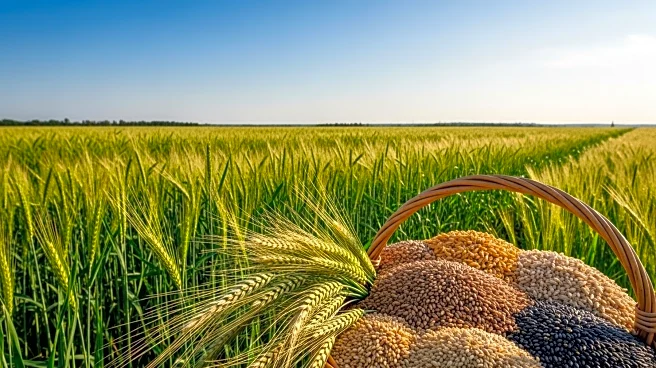What's Happening?
Director Agriculture Kashmir, Sartaj Ahmad Shah, visited the Seed Multiplication Farm in Padgampora Pulwama to review the progress on seed stock preparation and distribution. He also visited a lavender farm in Sirhama, where he engaged with technical experts and officers to discuss the economic potential of lavender as a cash crop. Shah emphasized the importance of departmental farms in achieving self-reliance in seed requirements for various agricultural crops. He highlighted the growing demand for quality lavender planting material and the efforts to attract agricultural entrepreneurs to this aromatic crop. The visit aimed to ensure the availability of quality seeds to the farming community and promote lavender farming as a viable economic opportunity.
Why It's Important?
The promotion of lavender farming in Kashmir represents a strategic move to diversify agricultural practices and boost the region's economy. Lavender is recognized as one of the best cash crops globally, offering significant economic benefits due to its high demand in various industries, including cosmetics and aromatherapy. By focusing on lavender cultivation, Kashmir can tap into new markets and enhance the livelihoods of local farmers. The initiative aligns with broader efforts to achieve agricultural self-reliance and sustainability, reducing dependency on external seed sources and fostering local entrepreneurship. The Director's visit underscores the commitment to advancing agricultural innovation and supporting the region's economic development.
What's Next?
The Director has urged officers and technical experts to work diligently towards meeting the targets for seed availability and quality assurance. The focus will be on expanding lavender cultivation and attracting more entrepreneurs to invest in this lucrative crop. Continued efforts will be made to enhance the infrastructure and resources at departmental farms to support these goals. The success of this initiative could lead to increased investment in Kashmir's agricultural sector and further diversification of crop production.










